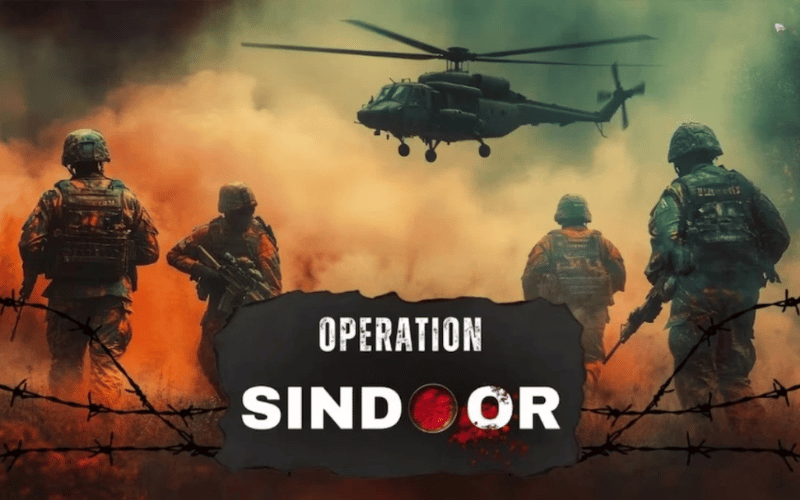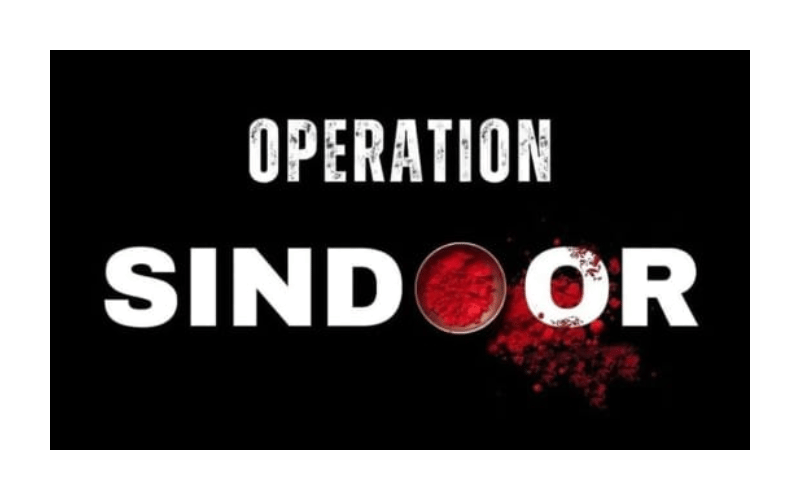Introduction
On April 22, 2025, a brutal terror attack in Jammu and Kashmir’s Pahalgam valley claimed the lives of 26 civilians—including a Nepali national—when militants opened fire on tourists visiting the idyllic Baisaran Valley. This massacre sent shockwaves through India, wiping away the “sindoor” of widows whose husbands were killed, and reigniting demands for decisive action against terror networks operating from across the border. Hindustan Times, The Siasat Daily. In response, at 1:05 am on May 7, the Indian Armed Forces launched “Operation Sindoor,” a calibrated 25‑minute aerial offensive that struck nine terror infrastructure sites in Pakistan and Pakistan‑occupied Kashmir (PoK) www.ndtv.com. For children growing up in border regions and beyond, these events marked a passage from paralyzing fear to a newfound sense of security and national pride.
The Shadow of Fear
For weeks before the May 7 strikes, villages along the Line of Control (LoC) lived under the constant echo of artillery and mortar shelling. On the night of May 7–8 alone, Pakistan’s Army posts unleashed unprovoked fire across Kupwara, Baramulla, Uri, and Akhnoor sectors—violating the ceasefire for the 14th consecutive day and killing 13 people, including four children and an Indian soldier www.ndtv.com. Homes shook with each blast; mothers clutched their infants in underground bunkers, and children huddled in darkness, eyes wide with terror. These relentless attacks shattered any illusion of safety, leaving the youngest generation haunted by the roar of guns rather than lulled by lullabies. The Siasat Daily.
Operation Sindoor Unfolds
In the pre‑dawn hours of May 7, the Indian Air Force executed a swift, precision strike against nine identified terror bases linked to Lashkar‑e‑Taiba (LeT), Jaish‑e‑Mohammed (JeM), and Hizbul Mujahideen (HM). The operation lasted just 25 minutes, during which 24 precision missiles neutralized training camps, command nodes, and supply depots—reportedly eliminating some 70 terrorists and injuring dozens more. www.ndtv.comHindustan Times. India’s Ministry of Defence emphasized the “focused, measured and non‑escalatory” nature of the strikes, highlighting that no Pakistani military facilities were targeted—a statement welcomed by families still grieving the Pahalgam victims www.ndtv.com. For many children, waking up to news of Operation Sindoor meant the first glimpse of justice after nights spent in fear of incoming shells.
A Child’s Trauma at the Border
One poignant illustration of this trauma comes from Kupwara district, where unrelenting shelling on May 8 claimed four young lives, part of a total of 13 civilians killed that night, www.ndtv.com. Among them was a ten‑year‑old boy whose schoolbooks lay abandoned beside his makeshift tubewell shelter. Across the border in Punjab, six civilians perished in villages struck by errant mortar fire, shattering windows and terrorizing families long before the retaliatory strikes ever took place.e The Times of India. For children in these frontline hamlets, Operation Sindoor did not just signal military might—it represented a turning point where fear might give way to a fragile, hard‑won peace.
A Child’s Pride
Yet alongside the shadows of loss emerged stories of resilience and pride. In Kochi, 17‑year‑old Arathi R Menon—whose father, N Ramachandran, was gunned down by terrorists in the April 22 attack—says she “felt proud as an Indian” when she heard the operation’s codename, noting how the strikes honored the memory of those who had “lost their sindoor” Hindustan Times. Similarly, in Pune, 16‑year‑old Kunal Ganbote—son of Kaustubh Ganbote, one of the Pahalgam victims—hailed Operation Sindoor as a tribute not only to fallen soldiers but to “women like my mother,” whose lives were irrevocably altered, The Times of India. For these teenagers, the operation rekindled faith that justice could prevail even in the bleakest of times.
Symbolic New Beginnings
Across India, the ripple effects of Operation Sindoor manifested in unexpected ways. In Bihar, Punjab, and Maharashtra, new parents celebrated by naming their newborns “Sindoor” in a wave of patriotic fervor, hoping their children would grow up embodying the courage and unity the operation represented. The Times of IndiaThe Times of India. Hospitals in Patna and Dombivli reported an uptick in birth registrations featuring the name “Sindoor,” with families describing it as a living emblem of resilience. These tiny salutes underscored how, for many, the operation offered not just vengeance but hope and a fresh start for the next generation.
A Sobering Reminder
Yet freedom’s dawn was not without startling reminders of lingering tensions. In Shahjahanpur, Uttar Pradesh, an eight‑year‑old boy named Surjeet was stabbed by two men while celebrating Operation Sindoor, chanting “Hindustan Zindabad” and “Pakistan Murdabad.” The Siasat DailyDeccan Herald. He suffered knife wounds to his arm and torso before bystanders intervened; he is now recovering in stable condition. This incident highlights how the surge of patriotic zeal can, tragically, provoke further violence, underscoring the fragile line between pride and peril for children navigating a polarized landscape.

Bridging Fear and Freedom
Taken together, these stories trace an arc from paralyzing fear to cautious freedom, seen through the eyes of India’s youngest witnesses. In Kanpur, the wife and daughter of Pahalgam terror victim Shubham Dwivedi spoke of “not feeling alone” after the operation—words that resonated with communities still reeling from violence, Hindustan Times. The “three messages” of Operation Sindoor, as noted by the Indian Express, underscored deterrence against terror, resolve in national defense, and a clear warning to Pakistan that India will respond decisively to threats on its soil. The Indian Express. For children, these messages translate into a newfound sense of security and a belief that their voices—and their safety—matter.
Conclusion
For the children who endured whispered warnings in bomb shelters, for the teenagers who found pride in a codename, and even for the infants christened “Sindoor,” Operation Sindoor marks a milestone in their collective journey from fear to freedom. While Pakistan’s subsequent retaliatory shelling and global calls for restraint remind us that the path to lasting peace remains fraught, Hindustan Times, the resilience shown by India’s youngest citizens offers a beacon of hope. As schools reopen and playgrounds echo once more with laughter, the story of these children stands as a testament: even in the darkest hours, the light of courage and unity can guide the way toward a freer tomorrow.
Looking Ahead: Long‑Term Impact on Children’s Well‑Being
Beyond the immediate relief of the aftermath of Operation Sindoor, families and communities are, finally, dealing with the longer‑term emotional and psychological scars of children who survived weeks of shelling and surprise airstrikes. Mental health professionals in border districts have noticed an increase in sleep problems, nightmares, and separation anxiety in six to twelve-year-olds, a lot of whom still jump at loud sounds or shy away from outdoor play. Local NGOs have come in to provide free counseling sessions in the makeshift ones, creating school‑campus clinics that pair up child psychologists with trained volunteers, so that young survivors will be able to share their fears through art and storytelling rather than words.
Teachers of Kupwara and Baramulla have re-worked their lesson plan so that they add “quiet time” daily, where the students are asked to draw or write down about safe spaces. These activities are now critical to parents, who once feared that allowing their children to be exposed to discussion of the conflict would cause more harm than good, because access to information about the fighting provides an invaluable sense of security.
Community Healing and Support Initiatives
In the northern districts, town halls and panchayat offices have held “Family Sangams” — weekly community prayer, music, and meal occasions, attended by entire neighborhoods. These events serve multiple purposes: They strengthen social ties afterwards, and during which the people have been locked up in their homes for so many weeks, provide stages on which children can stage skits about peace and unity, and open avenues of communication between civilians and local security forces charged with protecting them. Among those who come to these Sangams are army officers and police personnel too, who answer the children’s questions on safety protocols and how certain roads may still be closed checkpoints, active, useful information to families, and that chips away at the feeling of being in a constant combat zone.
At the same time, a “Operation Bloom” effort—an extracurricular initiative to plant trees and paint murals and resurrect community playgrounds in fire-affected regions—orgu… Gardening, eco‑art, and cooperative games workshops aren’t all a matter of decoration. They give the children a practical interest in reconstructing their neighborhoods. When a group of ten-year-olds in Uri repainted a war-ravaged wall with a mural of doves and rainbows, parents claimed they saw smiles that were missing for months. Children are also gaining basic first-aid and emergency preparedness skills that make them feel that they have some control over their lives in frightening situations.
Operation Sindoor will come to be remembered as a watershed surgical military operation that was, for many children, the first authentic guarantee of protection in a life lived close to the LoC. But the way from fear to freedom will be furthered by dialogue, healing, and practical support in the community. Experts insist that every time there are flashpoints: loose mortar fire or inflammatory slogans, adults must send children’s energy into constructive civic work, not allow their grief and anger to turn into hatred and revenge.














